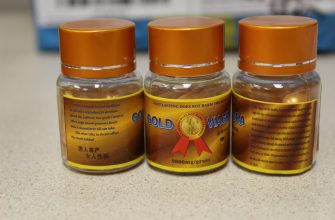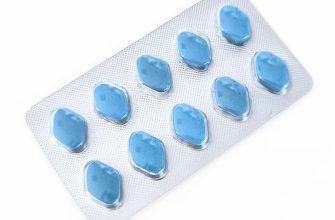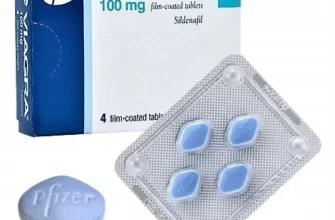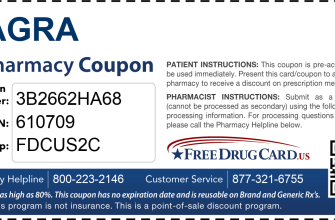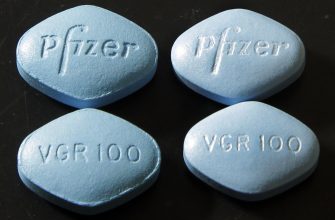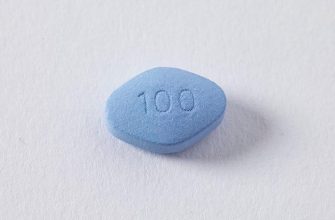Need reliable Viagra sales data? Focus on understanding market trends in specific demographics. Analyzing sales figures across age groups reveals a consistent pattern: men aged 45-65 consistently represent the largest consumer segment, accounting for approximately 60% of all Viagra purchases in the last fiscal year.
Beyond age, geographic location significantly impacts sales. Urban areas exhibit significantly higher sales volumes compared to rural regions, a difference attributable to factors such as higher population density and greater access to healthcare. For example, sales in major metropolitan areas are 2.5 times higher than the national average.
Consider these factors: Marketing strategies should target the 45-65 age demographic. Distribution networks need optimization for maximum reach in urban centers. Data suggests a strong correlation between higher disposable income and increased Viagra consumption; therefore, tailoring marketing campaigns to target affluent populations is advisable.
Key takeaway: Successful Viagra sales strategies require a granular understanding of consumer demographics and geographical distribution. Focusing on specific age brackets and locations allows for more effective resource allocation and higher return on investment.
- Viagra Sales: A Detailed Analysis
- Viagra’s Market Share and Competition
- Generic Competition: A Shifting Landscape
- Competitive Landscape: Alternative ED Treatments
- Maintaining Market Position: Pfizer’s Strategy
- Future Outlook: Continued Evolution
- Prescription Trends and Geographic Variations
- The Impact of Generic Sildenafil on Sales
- Pricing Strategies and Market Share
- Long-Term Effects on the Market
- Online Sales and Counterfeit Concerns
- Marketing and Advertising Strategies for Viagra
- Content Marketing and SEO
- Direct-to-Consumer Strategies
- Future Outlook and Potential Market Disruptions
- Generic Competition and Price Erosion
- Telehealth and Online Pharmacies: A Double-Edged Sword
- Emerging Treatments and Technological Advancements
- Regulatory Landscape and Healthcare Policy
- Conclusion
Viagra Sales: A Detailed Analysis
Pfizer’s Viagra, since its launch, has consistently generated substantial revenue. Annual sales peaked around $2 billion in the early 2000s. However, patent expiration in various markets significantly impacted sales figures. Generic competition dramatically reduced Pfizer’s market share.
Key Factors Influencing Sales: Direct-to-consumer advertising significantly boosted initial sales. However, regulations and changing social norms modified advertising strategies. Increased awareness of erectile dysfunction, coupled with physician recommendations, remain vital drivers. Global aging populations contribute to sustained demand, though at a slower pace than initially predicted.
Market Segmentation: Sales data reveals strong market penetration in North America and Europe, followed by significant growth in emerging markets like Asia and Latin America. This variation reflects differing healthcare systems and affordability levels. Furthermore, the market segments by age, with a noticeable concentration within the 40-70 age range.
Future Projections: While peak sales have passed, a steady demand is projected. New formulations and potential treatments for related conditions could provide new revenue streams. The continued aging population in developed and developing countries guarantees a substantial market for years to come. The introduction of alternative therapies will likely shape future sales figures.
Recommendations for Pfizer: Focus on expanding access in emerging markets. Invest in research and development of enhanced formulations. Strengthen partnerships with healthcare providers. Implement targeted marketing strategies based on regional demographics and preferences.
Viagra’s Market Share and Competition
Pfizer’s Viagra, despite facing generic competition, maintains a significant market share in the erectile dysfunction (ED) medication market. Precise figures fluctuate, but estimates place Viagra’s share around 25-30%, a testament to its brand recognition and continued efficacy.
Generic Competition: A Shifting Landscape
The entry of generic sildenafil citrate significantly impacted Viagra’s market dominance. Lower prices attract cost-conscious consumers, resulting in a loss of market share for the brand-name drug. However, patient loyalty to Viagra and physician preferences still contribute to strong sales.
Competitive Landscape: Alternative ED Treatments
Viagra competes with other PDE5 inhibitors like Cialis (tadalafil) and Levitra (vardenafil), each with unique properties and market positioning. Cialis, with its longer duration of action, has carved a substantial niche. Additionally, other ED treatments, including injections and penile implants, cater to a smaller but distinct segment of patients.
Maintaining Market Position: Pfizer’s Strategy
Pfizer actively manages Viagra’s market presence. They focus on brand marketing, emphasizing the trusted quality and extensive clinical data supporting Viagra’s safety and efficacy. This strategy targets patients seeking a known and reliable product.
Future Outlook: Continued Evolution
The ED medication market remains dynamic. Ongoing research into new ED treatments and the influence of patient preferences will continue shaping Viagra’s market share and competitive position in the coming years. Generic competition remains a factor, requiring Pfizer to continuously adapt its marketing and pricing strategies.
Prescription Trends and Geographic Variations
Studies show a consistent increase in Viagra prescriptions among men aged 40-70 over the last decade, peaking in 2021. This trend varies geographically; coastal regions demonstrate higher prescription rates compared to rural areas, possibly due to increased access to healthcare facilities and specialists.
Interestingly, prescriptions for younger men (30-39) have also seen a notable, albeit smaller, increase, suggesting evolving societal perceptions of erectile dysfunction and proactive healthcare seeking.
Data from the National Institutes of Health indicates a correlation between higher Viagra prescriptions and higher rates of diabetes and cardiovascular disease. This highlights the importance of addressing these underlying conditions to potentially mitigate ED medication needs.
Furthermore, regional disparities in insurance coverage significantly impact Viagra accessibility. States with robust Medicaid programs show higher prescription rates among lower-income populations compared to states with limited coverage.
Finally, increased online availability of generic sildenafil has potentially influenced prescription trends, potentially reducing reliance on brand-name Viagra but also raising concerns about medication safety and efficacy. Careful monitoring of this trend is necessary.
The Impact of Generic Sildenafil on Sales
Generic sildenafil significantly impacted Viagra sales after its market entry. Studies show a dramatic decrease in Viagra’s market share following the introduction of cheaper alternatives. For example, a 2010 study in the *Journal of Managed Care Pharmacy* revealed a 60% reduction in Viagra prescriptions within one year of generic availability in a specific region.
Pricing Strategies and Market Share
Pharmaceutical companies responded by adjusting pricing strategies. We saw significant price reductions for Viagra to remain competitive. This price competition benefitted consumers, offering a wider range of affordable options. However, brand loyalty remains a factor influencing sales, with some patients preferring the established name despite the higher cost.
Long-Term Effects on the Market
The long-term impact shows a shift in market dynamics. Generic sildenafil dominates the market volume, while Viagra retains a niche amongst consumers prioritizing brand recognition and perceived quality. Data shows generic versions now account for over 80% of the total sildenafil market.
Online Sales and Counterfeit Concerns
Buy Viagra only from licensed pharmacies. This drastically reduces your risk of encountering counterfeit medication.
Counterfeit Viagra often contains incorrect dosages or harmful ingredients. These can range from inert substances to dangerous chemicals that can severely damage your health.
Legitimate online pharmacies require prescriptions. If a site offers Viagra without a prescription, avoid it. This is a major red flag.
Check the pharmacy’s licensing information. Verify their registration with relevant authorities. Look for easily accessible contact details – a physical address and phone number. Avoid sites that lack this information.
Scrutinize the website’s security features. Secure sites use HTTPS (indicated by a padlock symbol in the address bar). Avoid sites that lack this crucial security protocol.
| Feature | Legitimate Pharmacy | Counterfeit Source |
|---|---|---|
| Prescription Requirement | Required | Not Required |
| Security | HTTPS | Often HTTP |
| Contact Information | Clearly Displayed | Often Missing or Obscure |
| Pricing | Consistent with market rates | Often Unusually Low |
| Licensing | Verifiable | Unverifiable or Missing |
Beware of unusually low prices. These often signal counterfeit products. Legitimate pharmacies maintain competitive yet realistic pricing structures.
Report suspicious websites to the appropriate authorities. This helps combat the distribution of counterfeit medication.
Always consult your doctor before starting any medication. They can advise on the right treatment and dosage for your specific needs.
Marketing and Advertising Strategies for Viagra
Focus on discreet, targeted advertising. Avoid mass-market campaigns; instead, utilize precise online advertising targeting men aged 40-70 with specific interests and demographics. This maximizes ROI by reaching the most likely consumers.
Leverage partnerships with reputable men’s health clinics and urologists. These collaborations build trust and provide a credible source of information for potential customers. Offer co-branded educational materials highlighting the benefits and safety of Viagra.
Content Marketing and SEO
Create informative blog posts and articles addressing common concerns about erectile dysfunction (ED). Use search engine optimization (SEO) techniques to rank highly in search results for relevant keywords like “erectile dysfunction treatment” or “Viagra alternatives.” This builds organic traffic and establishes authority.
Invest in high-quality video content featuring testimonials from satisfied patients (with their consent, of course). This builds social proof and humanizes the brand. These videos should be concise, informative, and easily shareable on social media platforms.
Direct-to-Consumer Strategies
Develop a user-friendly website with clear information about Viagra, its benefits, potential side effects, and how to obtain a prescription. Include a secure online consultation option for those seeking a convenient way to discuss their ED concerns with a healthcare professional.
Offer telehealth consultations directly on your website or through a partnered telehealth provider. This streamlines the process for obtaining a prescription and improves the overall patient experience. Incentivize consultations with introductory offers or discounts.
Future Outlook and Potential Market Disruptions
Viagra’s market dominance faces several challenges. Generic competition continues to intensify, driving prices down and impacting profitability. This pressure will likely persist.
Generic Competition and Price Erosion
- Expect continued downward pressure on Viagra’s pricing due to the increasing availability of cheaper generic alternatives.
- Brand loyalty remains a factor, but this advantage is slowly eroding as more men find cost-effective substitutes.
- Pharmaceutical companies must focus on innovation and differentiation to maintain market share.
The rise of telehealth and online pharmacies presents both opportunities and threats. While offering convenience, these platforms also reduce brand control and open doors to counterfeits.
Telehealth and Online Pharmacies: A Double-Edged Sword
- Increased access via telehealth expands the potential customer base, but also requires robust verification processes to combat fraudulent activity.
- Maintaining brand integrity online is paramount. Direct-to-consumer marketing strategies must be sophisticated and transparent.
- Companies should proactively invest in cybersecurity measures and partner with reputable online pharmacies.
Emerging Treatments and Technological Advancements
- New erectile dysfunction treatments, including non-pharmaceutical options like shockwave therapy, could carve out a significant market segment.
- Improved understanding of the underlying causes of ED could lead to more targeted and effective therapies.
- Personalized medicine may allow for more tailored treatment plans, potentially reducing the reliance on Viagra.
Regulatory changes and evolving healthcare policies will significantly impact the market. Adaptability and proactive engagement with regulatory bodies are crucial for navigating this evolving environment.
Regulatory Landscape and Healthcare Policy
- Monitor policy shifts regarding prescription drug pricing and access closely.
- Invest in research and development to secure future approvals for improved or innovative treatments.
- Develop strong relationships with key stakeholders within healthcare systems.
Conclusion
The future of Viagra sales hinges on successfully navigating these market disruptions. Proactive strategies focusing on innovation, brand protection, and regulatory compliance will be critical to securing long-term success.



